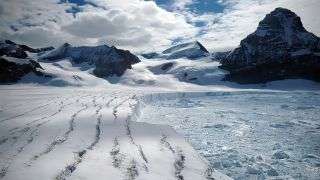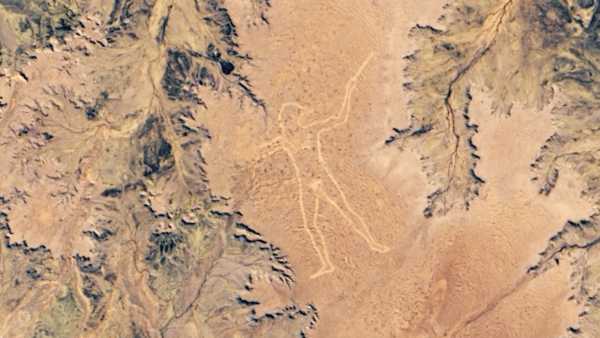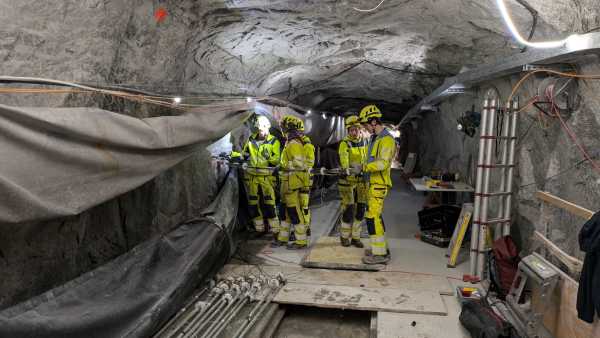
Antarctic ice shelves can disappear astonishingly fast — sometimes in minutes or hours — as meltwater surges through cracks in their surface. And as the atmosphere warms, this phenomenon may become more commonplace; at least half of the ice shelves on the continent are vulnerable to this process, a new study suggests.
These floating ice sheets ring Antarctica’s glaciers and prevent them from sliding into the ocean. Without these icy barriers, glaciers would flow more quickly into the water, causing the continent to shrink and accelerating sea level rise.
The new study, published today (Aug. 26) in the journal Nature, suggests that about 50% to 70% of ice shelves that hold Antarctic glaciers in place could become weak and potentially collapse with surges of meltwater.
“What we find is that the amount of melting is important, but where the melting happens is also important,” said lead author Ching-Yao Lai, a postdoctoral researcher in the Department of Marine Geology & Geophysics at Columbia University’s Lamont-Doherty Earth Observatory in New York. The research highlights which ice shelves are most likely to crumble, but not this dissolution is most likely to occur.
“The time frame over which this process could happen is the biggest question,” Christine Dow, the Canada Research Chair in Glacier Hydrology and Ice Dynamics at the University of Waterloo, who was not involved in the study, told Live Science in an email.
Cracks in the ice
Some ice shelves float on open water and do not slow glaciers’ slide into the sea, because there’s no land mass for them to brace against. But ice shelves confined to bays and gulfs create a physical barrier that the slow-moving glaciers butt up against. Lai and her colleagues focused on these so-called buttressing ice shelves.
The buttressing shelves accumulate cracks on their surfaces as glaciers push against them from behind, and cracks also appear as the shelf pushes against the curvature of the shoreline. In addition, the ice shelves stretch out as they flow across the ocean water, due to their velocity, Lai told Live Science. “Usually near the front of ice shelves, it gets stretched the fastest and this kind of breaking occurs,” she said.
When warm atmospheric conditions cause the surface of an ice shelf to melt, meltwater can pool in these cracks and cause “hydrofracturing” — a process in which the excess water puts pressure on the ice, deepening the cracks and sometimes triggering a complete collapse of the shelf.
The melt water “can punch through the ice to the ocean in a matter of minutes to hours, as long as there’s enough water available to keep on filling the crevasse and keep up the pressure,” Dow said. “The crack in the ice then fills up with ocean water,” and the shelf may begin to break apart. Scientists theorize that this is what happened to an ice shelf known as Larsen B, which lost 1,255 square miles (3,250 square kilometers) of ice over the course of a few weeks in 2002, according to The National Snow and Ice Data Center. For context, that area of ice is larger than the state of Rhode Island.
To determine which buttressing ice shelves are vulnerable to collapse, Lai and her colleagues developed a machine learning model — an algorithm that can be trained to recognize visual features based on past images it has analyzed. The authors trained their model to recognize surface fractures in the ice using satellite images of two ice shelves, named Larsen C and George VI, in the northwest region of Antarctica, and then applied the model to a complete map of Antarctica.
Related Content
—6 unexpected effects of climate change
—5 ways climate change will affect your health
—In photos: The vanishing glaciers of Europe’s Alps
With their map of ice cracks in hand, the researchers then determined which fractures in Antarctica’s many ice shelves would be prone to hydrofracture, given the pressures exerted on them from surrounding land masses and their movement over the water. Researchers have used this analysis at specific ice shelves before, but “this is the first time it has been applied to the Antarctic as a whole,” Dow noted.
The next big question is “how does this hydrofracture process contribute to the sea level rise?” Lai said. To find out, the team will need to pair their model of ice cracks with climate predictions and a model of how ice flows over the bedrock of Antarctica; this ice flows downslope into the ocean “just like rivers flowing downhill,” she said.
In the future, this type of research will help the authors determine how fast and how much sea level rise could change due to cracking ice sheets, given rising atmospheric temperatures, Lai noted. As of now, “estimating time scales on which these ice shelves might break up due to surface melting and hydrofracture is beyond the scope of their study,” Alison Banwell, a research scientist at the Cooperative Institute for Research in Environmental Sciences (CIRES) at the University of Colorado Boulder, who was not involved in the study, told Live Science in an email.
Though the researchers don’t have a time frame yet, some scientists predict that climate change may drive massive hydrofracturing events within a matter of decades, according to a 2015 report in the journal Earth and Planetary Science Letters.
“Also, Antarctic ice shelves are currently losing most [of their] mass due to basal melting,” or melting on the underside of the ice sheet, “in response to warming ocean temperatures,” Banwell added. “It would be interesting to see which ice shelves are most vulnerable due to all three processes,” meaning basal melt, surface melt and hydrofracture, combined. Basal melting could make ice shelves more prone to hydrofracture, as the shelves become thin and stretch more easily the more they melt, Lai added.
Sourse: www.livescience.com





